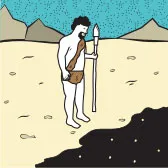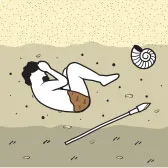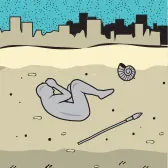1. PICK THE RIGHT PLACE TO DIE

Fossils form best in oxygen-starved environments that keep out bacteria. These conditions also encourage the chemical reactions that replace your body’s soft tissues with hard minerals. Drowning in a stagnant lake is a good bet, or a cold sea.
2. GET BURIED QUICKLY

A layer of sediment keeps out scavengers and protects your skeleton from being scattered by currents. Shallow seas are good because a constant, gentle rain of dead plankton and sediment is washed down by rivers. It will take at least 10,000 years to fossilise you.
3. GET DISCOVERED

If you want to be found as a fossil, pick a place where the motion of tectonic plates will lift you above sea level, so erosion can start peeling away the layers of rock above you. If the rock below you is crumbly, so much the better – it will collapse into cliffs that expose fossils faster.
Subscribe to BBC Focus magazine for fascinating new Q&As every month and follow @sciencefocusQA on Twitter for your daily dose of fun science facts.